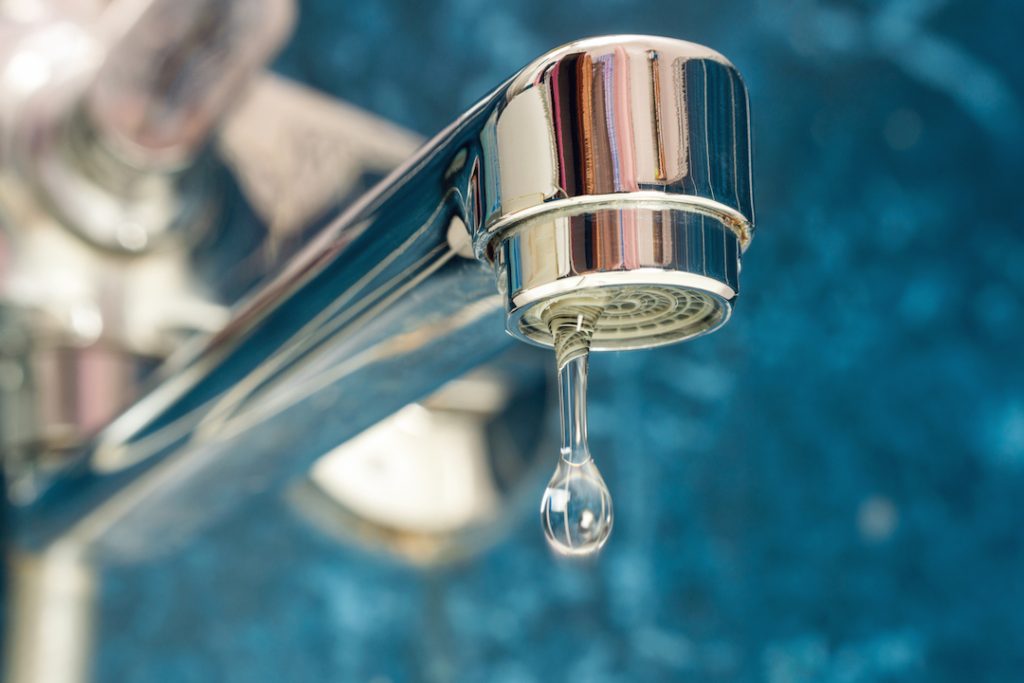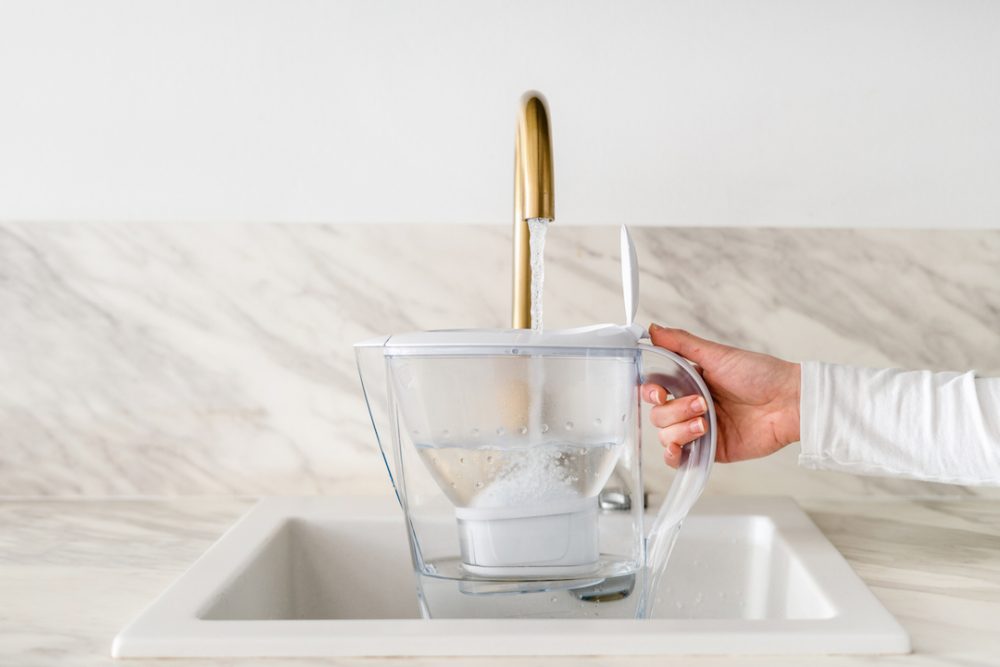Turns out, humidity does have an upside. Humidity is typically considered a hindrance for many people because of its muggy and overwhelming qualities. For atmospheric water generators, however, an abundance of evaporated water in the air is akin to being a kid in a candy shop. Atmospheric water generators harvest moisture in the air with systems involving condensing and cooling coil technology to convert it to refreshing, potable water, according to the Environmental Protection Agency (EPA). Essentially, atmospheric water generators take in the humid air in the surrounding environment, cool it until the moisture condenses the water into liquid form, and then collect the resulting water droplets for filtration and purification.
Though the scientific process that undergirds the foundational technology has been recorded in thousand-year-old civilizations, it has only been implemented on a wider scale within the last couple of decades due to global water shortages. But how can they fit into the average consumer’s home?
Benefits of Incorporating Atmospheric Water Generators Into the Home
According to a 2019 report from Fortune Business Insights on the global atmospheric water generator market, the industrial and large capacity segments contributed the largest share of the market at 74.5 percent. Though it is less common, there are benefits that come with incorporating an atmospheric water generator into daily use at the domestic level.
Redirects Domestic Water Usage

Most of the world’s water is used in industrial applications. In the US, 45 percent of water goes toward thermoelectric power, followed by 32 percent going toward irrigation and 12 percent being utilized for public supply, according to the EPA. At this point, atmospheric water generators are not implemented on a wide enough scale to completely replace existing home water systems. With their ability to generate water without tapping existing sources of water, atmospheric water generators have the potential to be beneficial at the macro and micro levels, helping redirect a substantial amount of water that is used domestically for various applications.
The EPA found that “the average American family uses more than 300 gallons of water per day at home,” and 19 percent of the water comes from the faucet. Atmospheric water generators can help reduce the water used from the faucet by pulling in water from the surrounding air indoors, which can also potentially contribute to a lower water bill.
Helps Alleviate The Effects of Water Scarcity
Though water covers 70 percent of the Earth’s surface, only 3 percent of this water is freshwater, which is the water that is most suited for human use and consumption. Furthermore, two-thirds of Earth’s freshwater is contained in massive glaciers, the soil, underground, and the atmosphere, making it inaccessible without extracting a high cost. Saltwater, which accounts for 97 percent of Earth’s water, can be desalinated into potable freshwater. However, this process can be expensive and energy-intensive on a large scale.
Water is a precious resource that many communities do not have adequate access to. Water scarcity is a reality in many parts of the world. According to the World Wildlife Fund (WWF), “some 1.1 billion people worldwide lack access to water, and a total of 2.7 billion find water scarce for at least one month of the year.” The WWF continues that “inadequate sanitation is also a problem for 2.4 billion people,” who are “exposed to diseases, such as cholera and typhoid fever, and other water-borne illnesses.” With the planet’s global temperature increasing annually, which causes more water to evaporate into the atmosphere, water scarcity is expected to impact more parts of the world. The WWF estimates that by 2025, “two-thirds of the world’s population may face water shortages,” affecting communities and ecosystems.
Atmospheric water generators do not extract potable water from finite sources of freshwater, nor do they involve energy-intensive methods to extract water. These generators access the water vapor in the air and convert it to liquid form. Water vapor is a renewable resource that is naturally present in the atmosphere. With the technology in atmospheric water generators, communities facing the effects of water scarcity can generate potable water from their homes.
Precise Water Filtration
Water typically undergoes a thorough treatment process before being consumed. However, not all the water from the tap is necessarily safe to drink. In the US, it is estimated that 45 percent of the nation’s tapwater contains one or more types of polyfluorinated alkyl substances (PFAs), according to a study done by the United States Geological Survey. The EPA defines PFAs as “a group of manufactured chemicals that have been used in industry and consumer products since the 1940s because of their useful properties.” PFAs break down very slowly in the environment and have the capacity to build up over time in the environment, as well as in humans and animals. Research is being conducted on the long-term health effects of PFAs, but peer-reviewed scientific studies indicate that exposure to PFAs can result in adverse reproductive effects, increased risk for certain types of cancers, and a decreased immune system.
Water quality can also be affected by the quality of the delivery system. Underserved communities with outdated water delivery systems or in close proximity to industry and waste sites can cause high amounts of harmful substances like lead to leach into the water, jeopardizing human health and safety. As an extra layer of protection, many consumers use a home water filtration system or a water filter. Atmospheric water generators have built-in filtration systems that can filter out harmful particulates in the air before being consumed.
The Atmospheric Water Generator from Spout
Atmospheric water generators are relatively inaccessible to the average consumer, with many costing thousands of dollars. However, atmospheric water generators are making their way into the home in the form of countertop appliances, providing consumers with clean drinking water with eco-friendly technology.
Spout is the latest innovator to introduce a countertop atmospheric water generator to the domestic sphere. With the Atmospheric Water Generator by Spout, users can generate up to 2.5 gallons of water per day, depending on humidity, just by plugging it into a standard outlet. Humidity varies per region and weather conditions. Indoors, humidity depends on factors such as temperature, ventilation quality, showers, appliance usage, and more, according to the EPA. Luckily, Spout takes all of the guessing work of whether the humidity level is high enough to generate an adequate amount of drinkable water. The Spout atmospheric water generator can operate on humidity levels as low as 20 percent, which is the average humidity level for climates in the US, according to their website.
Spout’s atmospheric water generator contains a water and air filter to ensure safe drinking water, which the company recommends be changed every three months. The water generated from the Spout is distilled and enters five stages of water filtration to ensure the cleanest drinking water:
- The hospital-grade air filter purifies the air as it enters the machine.
- The desiccant wheel absorbs the collected water and heats it to turn it into vapor.
- The vapor is converted into a liquid by the condenser, which is cooled by the ambient, filtered indoor air.
- The condensed water is then filtered by electropositive capture. During this process, the water is also remineralized to increase the alkalinity to approximately 9 pH, improving the taste and health effects of the water.
- The resulting water is then stored in an easy-access pitcher that has an extra layer of protection via a UV light on the inside of the lid to ward off microbial growth after the water has been filtered.
A bonus of the Spout countertop atmospheric water generator is that it is affordable. It is available for pre-order for $599 and a $99 deposit. The retail price comes out to $799.
Grand View Research estimates that the global atmospheric water generator market will experience a compound annual growth rate (CAGR) of 9 percent from 2023 until 2030. Atmospheric water generators are pivotal technology, having the capability to expand water access and availability during shortages, contamination events, and other issues that can interrupt drinking water services at the macro and micro levels. With innovations like the atmospheric water generator from Spout, this technology can be utilized by communities far and wide, potentially changing the future of clean water access.















